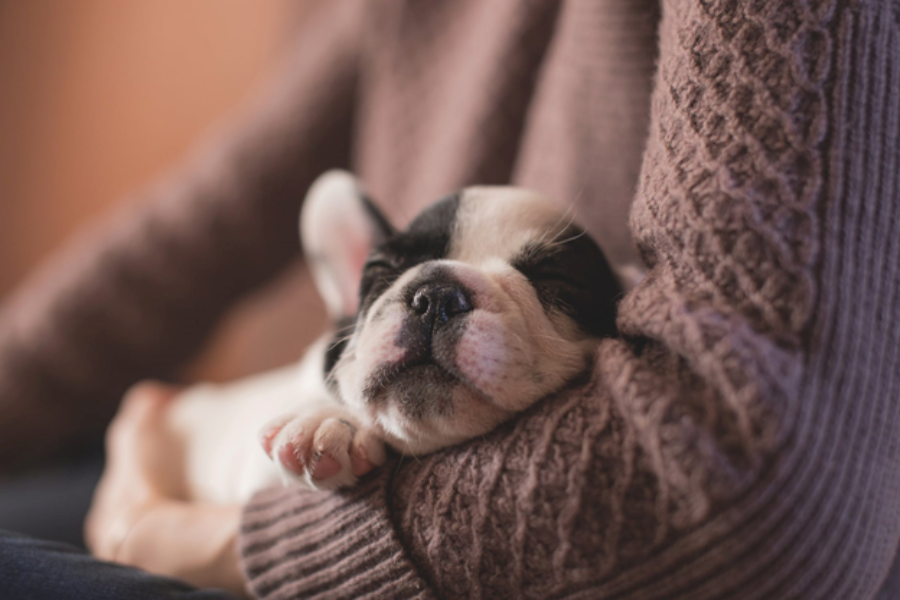You are probably very attached to your dog and can’t imagine your life without him. You know the feeling is reciprocated. Dogs are extremely loving creatures who worship the ground their owners walk on. You are the love of his life and the center of his universe. You are each other’s best friends and favorite companions.
That’s how the relationship between a dog and a dog parent should be. It is one of the most wholesome, most fulfilling, and most sincere relationships that you will ever foster in life. However, sometimes, your dog can become too attached to you and form an unhealthy association with you.
Such unhealthy feelings can affect his mental and physical health and cause much pain and sadness to him. As a loving dog parent, of course, you do not want him to suffer like that. With the coronavirus pandemic, your dog may have gotten used to seeing you around all the time and will not take it well when you finally leave for work and other things. You need to slowly train him so that he does not develop separation anxiety in your absence.
What is Separation Anxiety?
It is perfectly normal and healthy for your dog to miss you when you’re gone. Many dogs wait for you to get home in the evening and are overjoyed when they see your face. But if your dog is extremely upset at the sight of you leaving, it is cause for trouble, not just for your dog but for you as well.
Separation anxiety is when a dog is hyper-attached to their owner and gets extremely stressed when they leave. The absence of their owner triggers extreme anxiety in them, making them take unhealthy and injurious actions. Some dogs run away from home when they don’t see their owner around, and some get aggressive and harm themselves. Separation anxiety ranges in severity; some dogs have mild separation anxiety while some have extreme.
Separation anxiety is caused by feelings of abandonment or a change in the routine of how long a dog is left alone for. During the coronavirus lockdown, many dogs got used to having their around 24/7, and now that it will be time for people to go back to their normal routines from pre-corona times, the dogs might have difficulty adjusting and might not deal with the change well.
Symptoms of Separation Anxiety
Watch out for these signs in your dog. If you are leaving the house, even for short intervals, triggers this behavior in your dog, it might be cause for alarm and requires immediate attention. These signs can be an indication of separation anxiety if they only occur in your absence but never in your presence.
Tearing and Destructing the Home
Many dogs with separation anxiety wreck the house in frustration when their owners leave them alone. They bite sofas, tear curtains, chew on cushions, doorframes and rugs, and make a complete mess when left alone. This can also result in your dog harming himself unintentionally.
Urinating and Defecating
Some, when alone, pee and poop on the sofas, floor, or the bed when their owners are not around. If such behavior isn’t normal in your dog when you are home, it is most probably due to separation anxiety.
Barking, Howling and Whining
This is one of the most common symptoms of separation anxiety. The dog barks, howls, and whines all the while he is alone, trying to call his owner back to the house and letting out distress calls.
Escaping from the House
Many dogs escape from the house when left alone. If their owner isn’t there, they don’t want to be there either. They claw, bite and tear their way outside, which could be dangerous to them as they might get lost or injured.
Pacing
Many dogs with separation anxiety develop a habit of pacing when alone. They walk around in certain patterns, such as in a circle, over and over, consistently till their owners get back.
How to Treat Separation Anxiety
Here are some easy to follow tips on how to treat mild separation anxiety on your own. You might have to consult an expert on severe conditions, though.
- Condition your dog to believe that picking up keys, putting on shoes, and wearing makeup does not automatically mean you are going out.
- Start going out for short periods of time, and gradually increase the length of time, so it’s easier for the dog to take.
- Leave treats for your dog as you step outside the house and take them away when you are home.
- Command your dog to ‘stay’ as you go to the next room and forbid him to follow you. Treat him if he remains calm.
- Try out playdates, dog daycares and dog boarding to let him be without you and enjoy his time.
If the separation anxiety is severe, none of these things will work too well. You might eventually have to give him calming supplements and take him to an expert to make him better.
Separation Anxiety during the Pandemic
Your dog might not appreciate you leaving him alone all day to go to work and meet your friends once the pandemic is truly over. He might feel abandoned and alone, triggering separation anxiety. To avoid things getting ugly, you must get your dog used to seeing other people and being left without you for short stretches of time. A great way to accomplish this and avoid any episodes of aggravated anxiety is to leave your dog at a dog daycare every once in a while. This way, he can learn to be without you for some hours while enjoying the time apart. He can also meet new people and socialize with them, so you aren’t the only human he loves and trusts. He also gets to meet some new doggies and play with them as a bonus.
Twissted Whiskers Pet Spa and Hotel has a great dog daycare where the dogs can take a break from being in the house all the time, get some much-needed exercise, and some fun playtime under the watchful eye of our dog carers.





